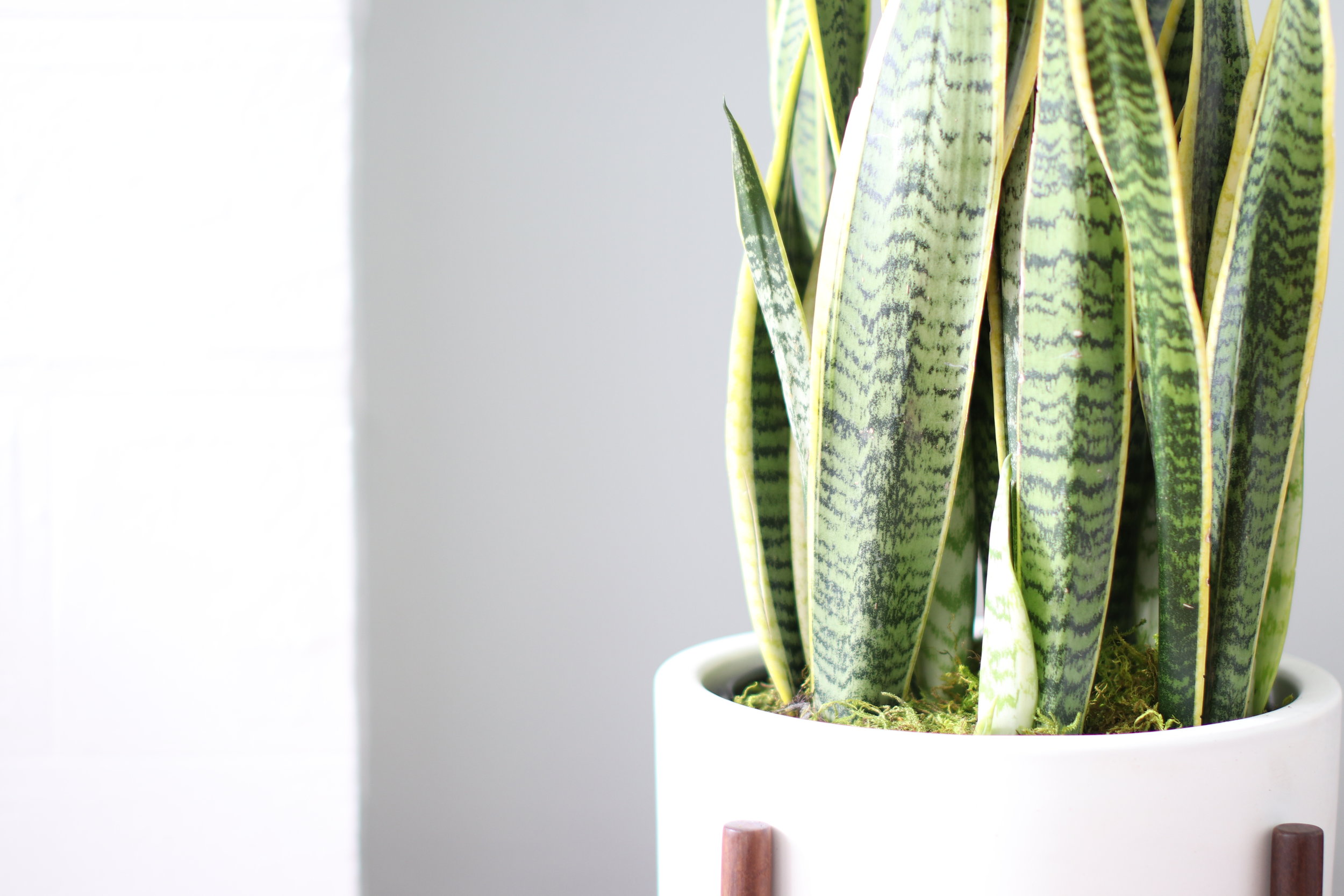Repotting Plants: Our Most Common Questions, Answered
Repotting indoor plants, like this Bird of Paradise, is a simple process.
Repotting plants may seem like a scary endeavor if you’ve never gotten your hands dirty, but anyone who’s tried it will agree that it’s not only simple but also quite fun and enjoyable as well! Learn how to repot, when to repot and more with this simple guide.
When SHOULD I REPOT MY PLANT?
When it comes to indoor plants, you should repot once every one to two years. However, sometimes your plant may also send you signals that it’s time to repot. Here are some signs you may look for:
Matted roots on the soil surface, as can be common with Fiddle Leaf Figs
The roots are coming out at the bottom, through the drainage holes for example, not uncommon with Birds of Paradise
The roots are seemingly “busting” at the seams, as sometimes seen on the Snake Plant or Zanzibar Gem (and if the plant is in a plastic nursery pot, it may well break it!)
The roots are quite literally “pushing” the plant out of the pot
The plant dries out very quickly, for example in a matter of days
WHAT ARE SOME OF THE BENEFITS OF REPOTTING MY PLANT?
There are many benefits to repotting your plants, and that’s why we recommend doing so every 1-2 years, even if you don’t plan on sizing up to a larger planter. Some of the benefits of repotting include:
More room for plants’ roots to grow
Fresh nutrients in the soil
Better airflow in fresh soil
An opportunity to remove dead or dying roots
What time of year should I Repot MY plant?
The best time of year to repot your plant is in the spring or summer, as this is when plants are actively growing. That said, is not the end of the world if for whatever reason you need to repot in the middle of winter!
HOW DO I REPOT MY PLANT?
Before repotting your plant, make sure you have the necessary basic materials to repot, like fresh, indoor potting soil. a new bigger pot if desired and sharp, clean shears.
Our Deluxe Repotting Kit is a great place to start if you have a large or XL Léon & George plant that needs sizing up.
Once you have all your materials, when your plant is dry or before it's next watering, follow these simple instructions:
Remove the plant from its pot. For smaller plants, you can do this by simply turning over the pot and letting the plant slide out. For larger plants, you may need to gently coax it out of the pot (pro tip: spread newspaper over the floor for easy clean up!). If your plant is difficult to remove from the pot (the roots are twisting out the drainage holes), you may need to simply cut these roots off to get it out.
Shake the soil off the roots, removing about half of the old soil. You may need to gently detangle some of the roots to do this. Don’t panic if some of them rip or break. You may also prune some roots, especially if you are planning on potting it in the same pot as before.
Pour a couple inches of fresh potting soil into the pot and pat down so it’s firm.
Place the plant in the pot and fill with more soil until it’s secure in place and standing straight. Pat down again until firm.
Fill with soil to the top of the pot, but make sure to leave about an inch so that water does not overflow when you water your plant.
Water thoroughly and let the plant completely drain.
Voilà! You’re done. Remember that your plant may be a little unstable the first few weeks in its new pot, so take care when moving it back to its home.
WHAT IS THE Best Potting Soil for Indoor Plants?
You don’t need any special type of potting soil for most indoor plants. Any organic potting soil labeled for indoor plants will do. Certain plants, such as succulents and cacti, may need a fast-draining potting soil, but generally speaking the majority of popular houseplants will do just fine with regular indoor potting soil.
Do you have to repot your plant?
Our Plant Doctors receive many enquiries about when to repot plants, or if it’s an absolute must for the plant to thrive. The truth is that most indoor plants only need repotting once every one or two years (though some slow growers can survive many years in the same pot!), and even then, it isn’t necessarily required to repot them in a bigger container.
The primary reason why we repot plants is to give them fresh, nutrient-rich soil, which can easily be done by removing the plant from its pot and shaking the old dirt off the roots. At that point, if you’d like your plant to stay the same size, you may simply repot it directly in the old pot, of course with fresh new soil. If you’d like your plant to grow bigger, you can repot it in something about two inches larger than what it was in before.
Of course depending on the plant, it could potentially survive years without repotting. But if you want your plant to thrive, think about giving it some fresh soil and even room to grow every few years!
Need help gathering the materials you’ll need for repotting plants? Our Deluxe Repotting Kit is a complete set of items to make repotting a breeze!
Indoor plants, potted & delivered.
Premium plants paired with stylish ceramics. Order online at leonandgeorge.com

